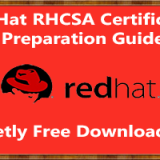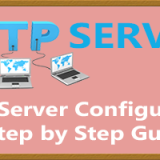AWS Basic Interview questions and answers | Arkit
AWS – Amazon Web Services is the technology which growing faster in Information Technology world. In this, I am going to post 100 AWS Basic Interview Questions and answers. Best of luck with your interview.
AWS stands for Amazon Web Services. AWS is a platform that provides on-demand resources for hosting web services, storage, networking, databases, and other resources over the internet with a pay-as-you-go model.
What are the AWS Main components?
- EC2 – Elastic Compute Cloud
- S3 – Simple Storage Service
- Route53 Highly Scalable domain naming system
- EBS – Elastic Block Store
- EFS – Elastic File system
- Cloudwatch and CloudTrail
- Key-Paris are a few of the components of AWS.
Key-pairs are secure login information for your instances. To connect to the instances we use key-pairs that contain a public-key and private-key for authentication.
S3 stands for Simple Storage Service. It is object storage where you can use RESTFUL API calls to PUT, GET, LIST, and DELETE. High scalable you can access anywhere in the world.
What are the pricing models for EC2instances?
- The different pricing model for EC2 instances are as below,
- On-demand Instances
- Reserved Instances
- Spot Instances
- Scheduled Instances
- Dedicated Hosts
What are the types of volumes for EC2 instances?
Two types
- Instance Store Volumes – Used for storing Operating system (Boot Device)
- EBS – Elastic Block Store – designed for high workload applications
EBS stands for Elastic Block Stores. They are persistent volumes that you can attach to the instances. With EBS volumes, your data will be preserved even when you stop your instances, unlike your instance store volumes where the data is deleted when you stop the instances.
Can you Explain EBS Volume types?
Following are 4 types of volumes in EBS
- General-purpose SSD (gp2)
- EBS Provisioned IOPS (io1)
- Cold HDD (sc1)
- Throughput optimized (st1)
Different Types of EC2 Instances.?
Following are the types of instances
- General-purpose Computer
- Storage Optimized
- GPU Compute
- Memory-Optimized
Do you know Auto-Scaling and Its components?
Auto-scaling allows you to automatically scale-up and scale-down the number of instances depending on the CPU utilization or memory utilization. There are 2 components in Autoscaling, they are Auto-scaling groups and Launch Configuration.
What are the reserved instances?
Reserved instances are the instance that you can reserve a fixed capacity of EC2 instances. In reserved instances, you will have to get into a contract agreement of 1 year or 3 years.
AMI stands for Amazon Machine Image. AMI is a template that contains the software configurations, launch permission and a block device mapping that specifies the volume to attach to the instance when it is launched.
EIP stands for Elastic IP address. It is designed for dynamic cloud computing. When you want a static IP Address to your instance you can get an IP address using an elastic IP pool and assign it to an instance.
AWS Basic Interview Questions and Answers
Cloudwatch is a monitoring tool that you can use to monitor your AWS resources. Like health check, Network, CPU, Memory. Application, and etc.
What are the types in cloudwatch?
There are 2 types in Cloudwatch.
- Basic monitoring
- Detailed monitoring.
Basic monitoring is free and detailed monitoring is chargeable.
Cloudwatch metrics that are available for EC2 instances?
- Disk reads
- Disk writes
- CPU utilization
- Network Packets In
- Network Packets Out
- Network In
- Network Out
- CPU Credit Usage
- CPU Credit Balance
What is the minimum and maximum size of individual objects that you can store in S3
The minimum size of individual objects that you can store in S3 is 0 bytes and the maximum bytes that you can store for individual objects is 5TB.
Different types of Storage Classes in S3
- S3 Standard
- Infrequent Access
- One Zone-Infrequent Access
- Glacier Archival service
How can you secure access to your S3 bucket?
There are two ways that you can control access to your S3 buckets
- ACL – Access Control List
- Bucket policies
How do you encrypt data in S3?
You can encrypt the data by using the below methods
- S3 (AES 256 encryption)
- KMS (Key Management Service)
- Encrypt data in your machine and upload to S3
The pricing model for S3 is as below
It’s all based on your data stored size, GET and PUT RESTful API Calls.
20000 Get and 2000 Put calls are free.
Pre-requisite to work with Cross-region replication in S3?
You need to enable versioning on both source bucket and destination to work with cross-region replication. Also, both the source and destination bucket should be in different regions.
Roles are used to providing permissions to entities that you trust within your AWS account. Roles are users in another account. Roles are similar to users but with roles, you do not need to create any username and password to work with the resources. It’s a temp token.
What are policies and what are the types of policies?
Policies/Documents are permissions that you can attach to the users and groups that you create. These policies will contain the access that you have provided to the users and groups that you have created.
There are 2 types of policies.
- Managed policies
- Inline policies
Cloudfront is an AWS web service that provided businesses and application developers an easy and efficient way to distribute their content with low latency and high data transfer speeds. Cloudfront is a content delivery network of AWS.
An edge location is a place where the contents will be cached. When a user tries to access some content, the content will be searched in the edge location. If it is not available then the content will be made available from the origin location and a copy will be stored in the edge location. Just like caching service.
The maximum individual archive that you can store in a glacier?
40 Tera Bytes you can store
VPC stands for Virtual Private Cloud. VPC allows you to easily customize your networking configuration. VPC is a network that is logically isolated from other networks in the cloud. It allows you to have your own IP address range, subnets, internet gateways, NAT gateways, and security groups.
VPC peering connection allows you to connect 1 VPC with another VPC. Instances in this VPC behave as if they are in the same network.
AWS Interview Questions and Answers
Note: These are all the questions and answers are prepared for beginners and intermediate persons, not who have good exposure to AWS because they already know all of these terminologies.
NAT stands for Network Address Translation. NAT gateways enable instances in a private subnet to connect to the internet but prevent the internet from initiating a connection with those instances.
How can you control the security of your VPC?
You can use security groups and NACL (Network Access Control List) to control the security to your VPC.
File gateway
Volume gateway
Tape gateway
Snowball is a data transport solution that used source appliances to transfer large amounts of data into and out of AWS. Using snowball, you can move a huge amount of data from one place to another which reduces your network costs, long transfer times and also provides better security.
Database types in RDS AWS Support?
RDS – Relational Database Services
- Amazon Aurora
- Oracle
- MySQL server
- Postgresql
- MariaDB
- MSSQL server
Amazon Redshift is a data warehouse product. It is a fast and powerful, fully managed, petabyte-scale data warehouse service in the cloud.
SNS stands for Simple Notification Service. SNS is a web service that makes it easy to notifications from the cloud. You can set up SNS to receive email notifications or message notifications.
Types of routing policies in route53?
- Simple routing
- Latency routing
- Failover routing
- Geolocation routing
- Weighted routing
- Multivalue
Maximum size of messages in SQS?
The maximum size of messages in SQS is 256 KB.
Standard Queue
FIFO (First In First Out)
Multi-AZ (Availability Zone) RDS allows you to have a replica of your production database in another availability zone. The multi-AZ option is used for disaster recovery. You will have an exact copy of your database (replica). So when your primary database goes down, your application will automatically failover to the standby database.
Available types of backups in RDS?
Automated backups
Manual backups are known as snapshots.
What is the difference between security groups and network access control lists?
Security Groups and Network access control list both can control the access at the instance level. Can control access at the subnet level Can add rules for “allow” only Can add rules for both “allow” and “deny” Evaluates all rules before allowing the traffic. Rules are processed in order number when allowing traffic. Can assign an unlimited number of security groups Can assign up to 5 security groups.
- Stateful filtering
- Stateless filtering
ELB stands for Elastic Load balancing. ELB automatically distributes the incoming application traffic or network traffic across multiple targets like EC2, containers, and IP addresses.
3 types of the load balancer
- Application load balancer
- Network load balancer
- Classic load balancer
Types of Access you can provide to IAM Users?
Programmatic access (For automation purpose)
Console access
Tell me the benefits of auto-scaling?
Following are the benefits of auto-scaling
- Fault tolerance
- Availability
- Cost management
Security groups act as a firewall/IPtables that contains the traffic In and Out rules, like Allow or Deny particular ports.
Shared AMI’s are the Amazon Machine Images that are created by other developers and made available for others to use.
Difference between the classic load balancer and application load balancer?
Dynamic port mapping, multiple ports multiple listeners are used in Application Load Balancer, One port one listener is achieved via Classic Load Balancer
By default how many Ip addresses does AWS reserve in a subnet?
5 Addresses
Some More AWS Questions and Answers
A large section of IP Address divided into chunks are known as subnets
How can you convert a public subnet to a private subnet?
Remove Internet Gateway & add NAT Gateway, Associate subnet in Private route table
Is it possible to reduce a EBS volume?
No reducing volume size is not possible however you can increase EBS volume size.
Is the deleted S3 bucket objects are recoverable?
Yes, when you have versioning enabled in bucket level and if you do not delete versions.
Note: Deleted S3 buckets are not recoverable.
When I try to launch an ec2 instance I am getting the Service limit to exceed, how to fix the issue?
By default AWS offers a service limit of 20 running instances per region, to fix the issue we need to contact AWS support to increase the limit based on the requirement.
Expanding Instance Associated EBS Volume is possible?
Yes, it’s possible from console use to modify volumes in section give the size u need then for windows go to disk management for Linux mount it to achieve the modification
Is it possible to stop an RDS instance, how can I do that?
Yes, it’s possible to stop rds. An instance which is non-production and non multi Available Zone
Thanks for your visit. A few more AWS Interview Questions and answers will post in the next part.
Please share with your friends.
for More AWS Articles
Thanks for your wonderful Support and Encouragement
- Get Email | Download E-Books
- Facebook Page
- Youtube Channel
- Exclusive Telegram Group
- Discuss On WhatsApp Group






